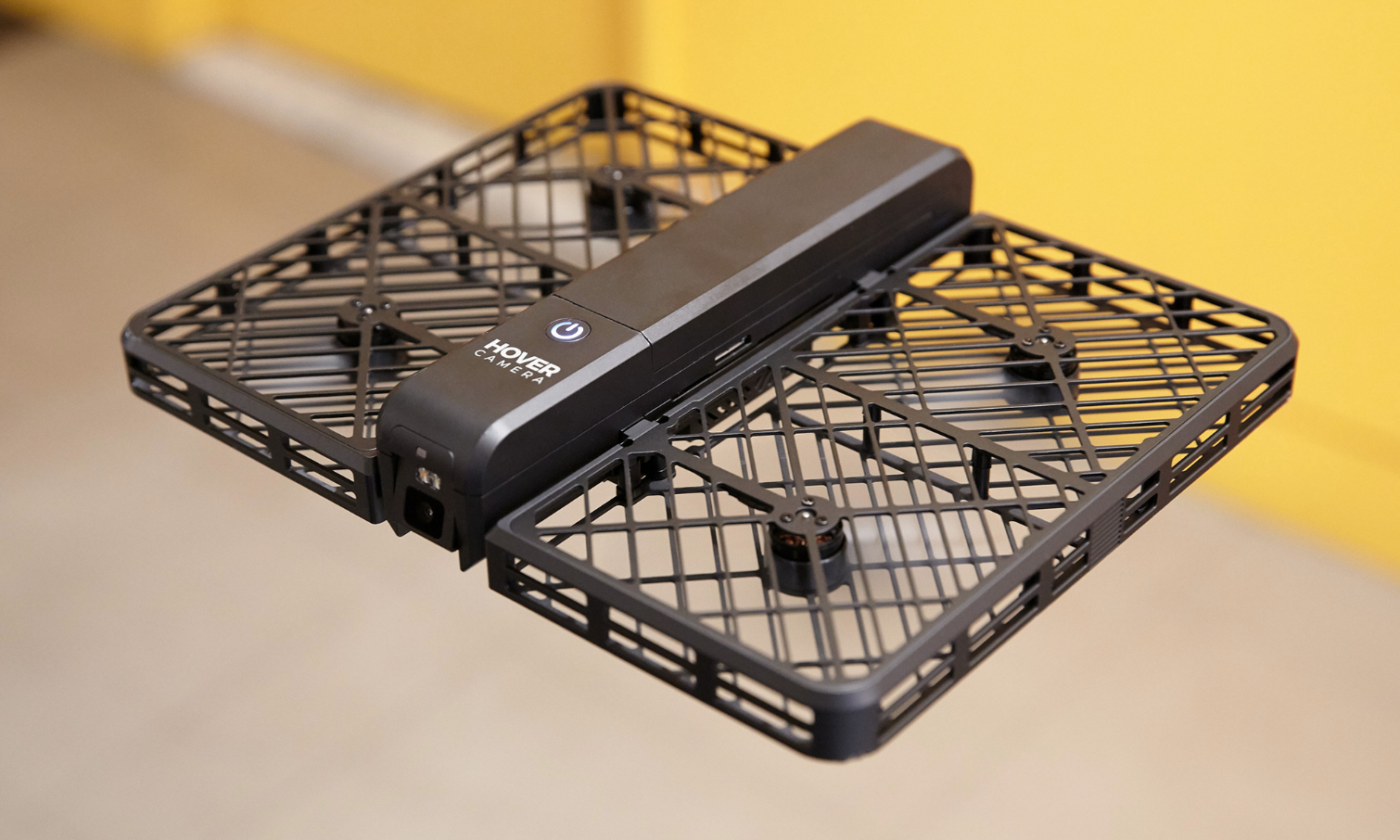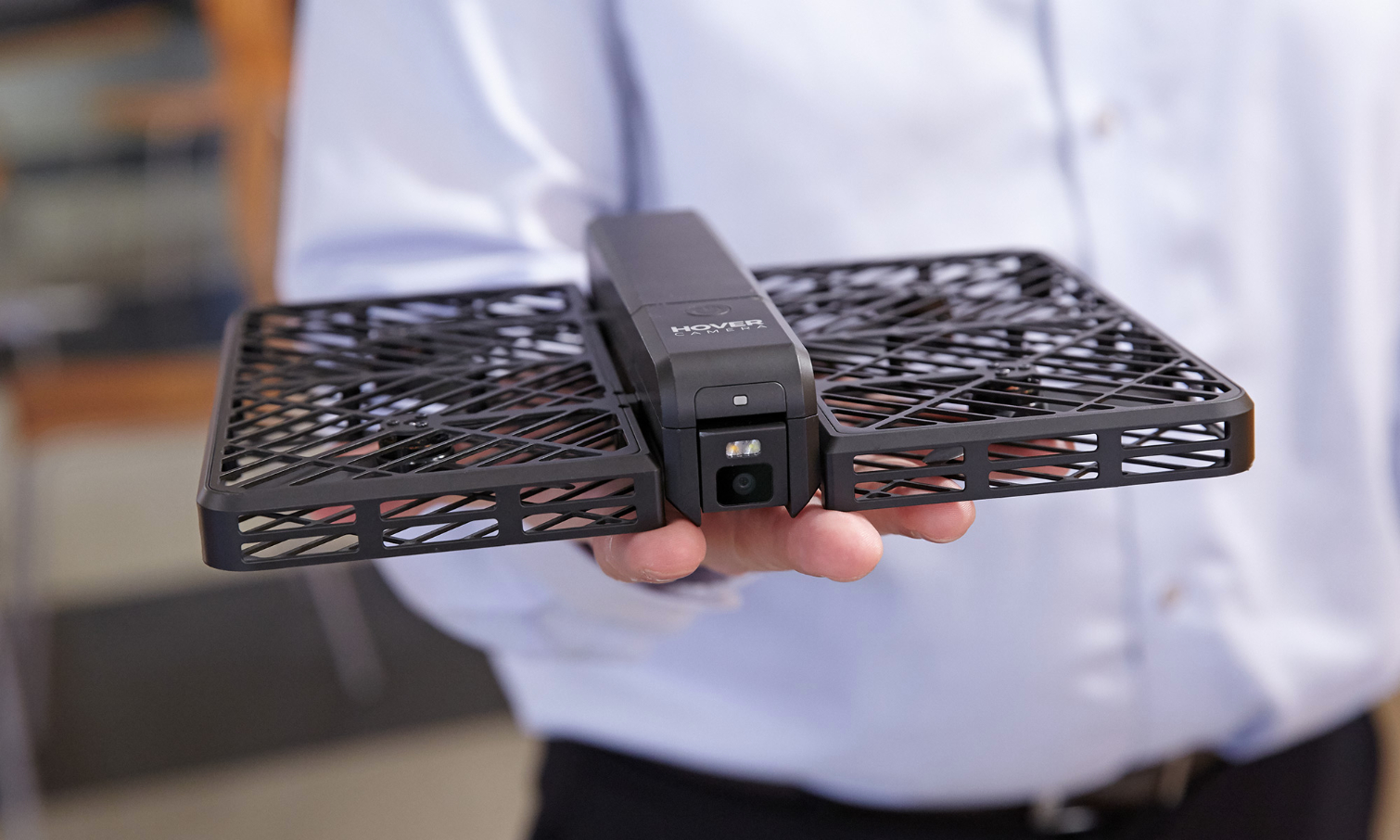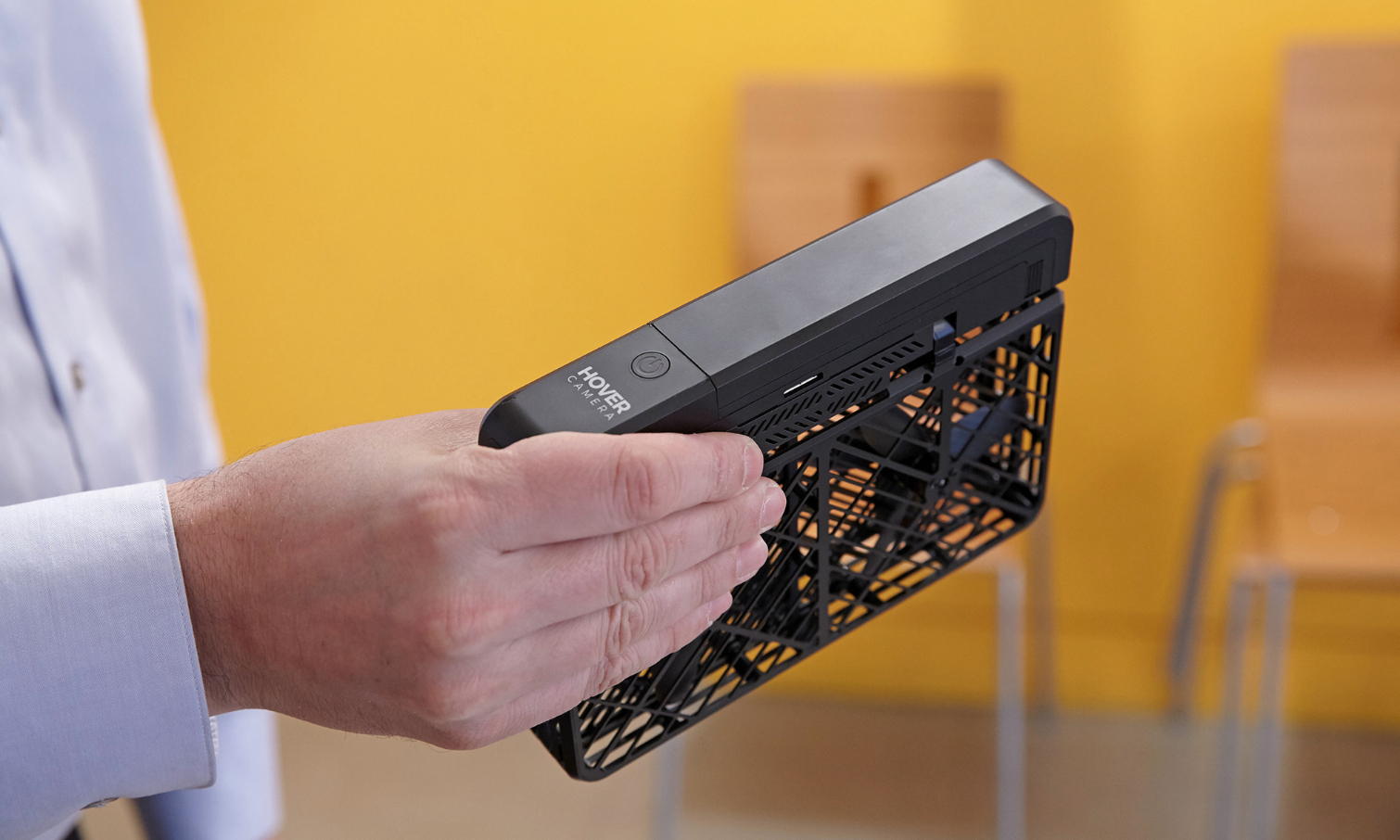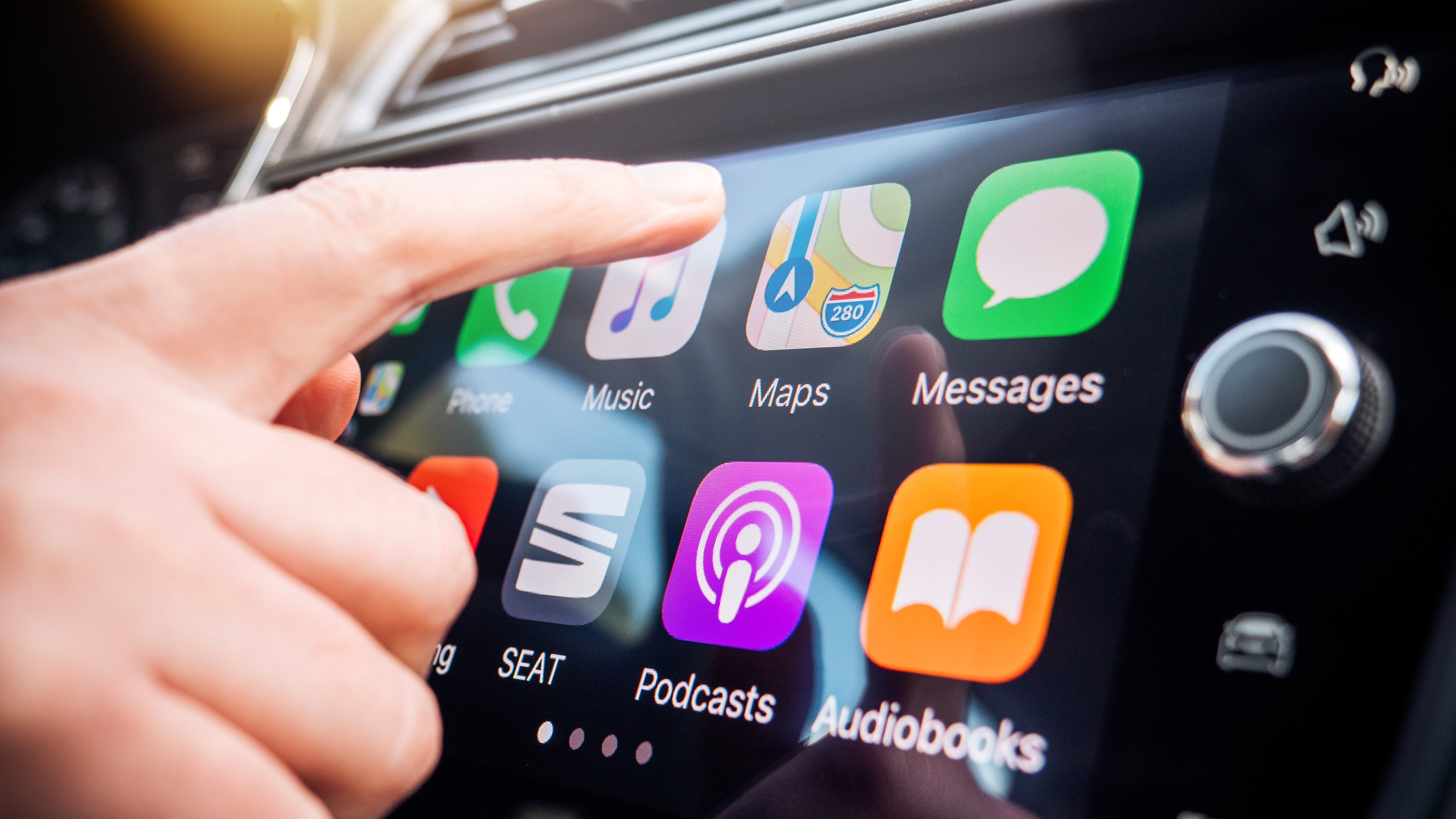Tom's Guide Verdict
A compact design, great video quality and easy-to-use controls make the Hover Camera Passport a very good drone for beginners.
Pros
- +
Face recognition and tracking
- +
Very stable
- +
Easy to launch and fly
- +
Portable
Cons
- -
No image stabilization for 4K video
- -
Short battery life for price
Why you can trust Tom's Guide
Meet the selfie drone. The Hover Camera Passport is a small, portable drone designed to take photos and videos of you and your friends doing cool stuff. It's ridiculously easy to fly, has face- and body-tracking technology, and folds up to the size of a small book. While you could buy 100 selfie sticks for the price of this $499 drone, it can capture you from vantage points you'd never reach if all you had was a long pole. Still, the drone's small size comes with some limitations.
Design
The Hover Camera Passport is so small that my review unit was almost taken out, midair, by a hawk that thought the drone could be its next lunch.

About the size of a large paperback book, the Passport folds up to 7.2 x 5.2 x 1.3 inches, making this drone even more compact than DJI's $999 Mavic Pro, which itself is a small 8 x 4 x 3.5 inches when folded.
Four rotors (two on each side) are encased in a protective cage, and fold out. If you were to open a book in the middle and lay it flat on a table, cover side up, you'd have a rough approximation of what the Hover looks like when opened.
The central section of the Hover — the spine, if you will — is largely made up of a removable battery. A camera, which tilts up and down, sits on one end, along with a measly flash.
There is just one button on the Hover drone: Press it to turn the drone on, wait about a minute, hold the drone in midair and press the button again: The Hover will then hover right where you left it. To shut the drone off, simply grab it and fold in its two sides.

Even with its battery, the drone, which consists largely of carbon fiber, is very light, at just 8.5 ounces. That means it doesn't need to be registered with the FAA (Federal Aviation Administration). The drone is less than half the weight and size of the $499 Yuneec Breeze 4K and the $549 Parrot Bebop 2.
MORE: The Best Drones and Quadcopters on Any Budget
App
The Hover Passport doesn't have its own physical controller; rather, you have to use the drone's app on your iOS or Android device, which you link to the Hover via Wi-Fi. Although it's meant for extreme portability, I wish the Passport had the option for a physical controller, like the Bebop 2 does.

After you launch the app, a live feed from the Hover’s camera takes up the main section of the display. Overlaid on the lower third are controls to fly the drone around. I like that Hover lets you choose from among three types of controls. You can also adjust the angle of the drone's camera, but how to do so is not as obvious; you have to drag your finger up and down the middle of your phone's screen.
Along the left side of the display is a battery-life indicator, along with settings for a timer and flash, as well as a mode that will take a panoramic video. Also here is Orbit mode, which will cause the Hover camera to orbit around a subject, tracking the individual as he or she moves.
Keep in mind that the Hover doesn't have any object-avoidance sensors on its sides, so you'll want to use the Orbit feature in an open space. I — or rather, the Passport — found this out the hard way, as it crashed into some trees more than once while following me.

Hover is adding some new features so that, in the future, you won't need to use a smartphone app to control the drone at all. An Owner mode in the Hover app lets you register your face, so that the Passport will automatically track you once you launch the drone. Also coming are gesture controls, such as holding up your hand to take a picture and making an OK sign to land the drone. I was tested these features out in a beta version of the app and found they both worked well. I especially liked that the photo feature gives a 5-second countdown. However, the Passport followed me very closely in Owner mode, almost running into me once or twice.
Face and Body Tracking
Want the Hover Passport to follow you automatically? Like the Parrot Bebop 2, it can track someone's face or body as the person walks around, which I found to be both cool and unnerving.
The two features performed fairly well, as the Passport followed me faithfully while I walked around a park. However, if I turned my head completely or moved too quickly, the drone would lose its lock and stop moving. When this happens, the Passport also sends an alert to your phone.
The drone tries to maintain the same distance from you at all times. So if you're walking and suddenly stop, the Hover will screech to a halt midair, and then back up slowly to the original distance. You need a lot of room for this feature, too; Hover recommends about 8 meters' distance between the subject and the drone.
The Hover isn't a particularly fast drone, as its speed tops out at around 17 mph. So if you're cruising around on a bike, the done will have a hard time following you. Hover also advises against using the drone while skiing, as the device's down-facing sonar and camera (used for range-finding) will have difficulty with the angle of a mountain, as well as the white snow. It even had trouble on a white tile floor.
MORE: Drone Buying Guide: Everything You Need to Know
Video
The Passport's 13MP camera records video at 4K and 30 frames per second; that's better than the Bebop 2, whose resolution tops out at 1080p. Video recorded from the Passport was well-detailed and color-rich. The camera also adjusted well for bright conditions; even though my face was in shadows and the camera was pointing toward the sun, I could still make out details in my face.
Unlike larger and more expensive camera drones, such as the DJI Mavic Pro, which have their cameras mounted on a gimbal, the Passport has to rely on electronic image stabilization. This is somewhat effective, but, like on the Yuneec Breeze, it works only on videos up to 1080p in resolution. As a result, the 4K video I shot was a little on the jittery side as the Passport moved to track my movements. There was also a bit of tearing as the camera panned around. The Bebop 2 also lacks a gimbal, but it does a much better job at stabilizing video using a wide-angle lens and some neat software tricks.
I didn't see much improvement in stability when I decreased the resolution to 1080p on the Passport. I also found it annoying that, to switch resolution, you have to go back to the home screen on the app, which means leaving the screen that has the drone controls. Not only is that inconvenient, but it's also potentially dangerous, as you have to trust that the drone will remain in place while you leave the controls.
For the most part, the drone itself remained fairly stable. I was able to maneuver it reasonably close to a curious hawk in a tree, without risk of hitting the bird or the branches. However, the light weight of the Passport makes it pretty susceptible to gusts of wind; occasionally it would get knocked off course, but it quickly righted itself.
Also, the Passport doesn't capture audio, although all you'd hear is the whirring of its propellers.
The Passport has 32GB of onboard storage — more than twice that of the Yuneec Breeze — which, unfortunately, can't be removed or replaced. You can transfer images and video from the camera either wirelessly to your smartphone or through a USB port on the side of the Passport.
Battery Life
According to the company, the Hover Camera Passport's battery will last about 10 minutes. In practice, I found that to be fairly accurate, with the battery's time coming up about a minute short in moderately windy conditions. That's about half what you get with the Bebop 2 and the Yuneec Breeze, which is disappointing, but a predictable trade-off given the Passport's size.

The Passport comes with two batteries, which each take about 40 to 60 minutes to charge.
Repairability and Accessories
Included with the Passport are two batteries, a charger, four propellers and a screwdriver. A padded carrying case can accommodate the drone and its batteries. As the rotors are protected by a cage, it's pretty hard to break them, unless something gets in the mesh cage. If that does happen, the cages can be unscrewed so you can get at the rotors.
Additional batteries cost $45 each.
MORE: What the FAA's Drone Rules Could Mean for You
Bottom Line
If you're looking for a highly compact drone that takes great photos and video, then you should consider the Hover Camera Passport. However, for around the same price, the Parrot Bebop 2 offers twice the flight time, a more stable (but lower-resolution) image and the ability to use not just a physical controller, but FPV goggles, too. Still, there's no getting around the supreme portability of Hover's drone, which could be your passport to a world of great videos.
Photo credits: Jeremy Lips/Tom's Guide

Michael A. Prospero is the U.S. Editor-in-Chief for Tom’s Guide. He oversees all evergreen content and oversees the Homes, Smart Home, and Fitness/Wearables categories for the site. In his spare time, he also tests out the latest drones, electric scooters, and smart home gadgets, such as video doorbells. Before his tenure at Tom's Guide, he was the Reviews Editor for Laptop Magazine, a reporter at Fast Company, the Times of Trenton, and, many eons back, an intern at George magazine. He received his undergraduate degree from Boston College, where he worked on the campus newspaper The Heights, and then attended the Columbia University school of Journalism. When he’s not testing out the latest running watch, electric scooter, or skiing or training for a marathon, he’s probably using the latest sous vide machine, smoker, or pizza oven, to the delight — or chagrin — of his family.
